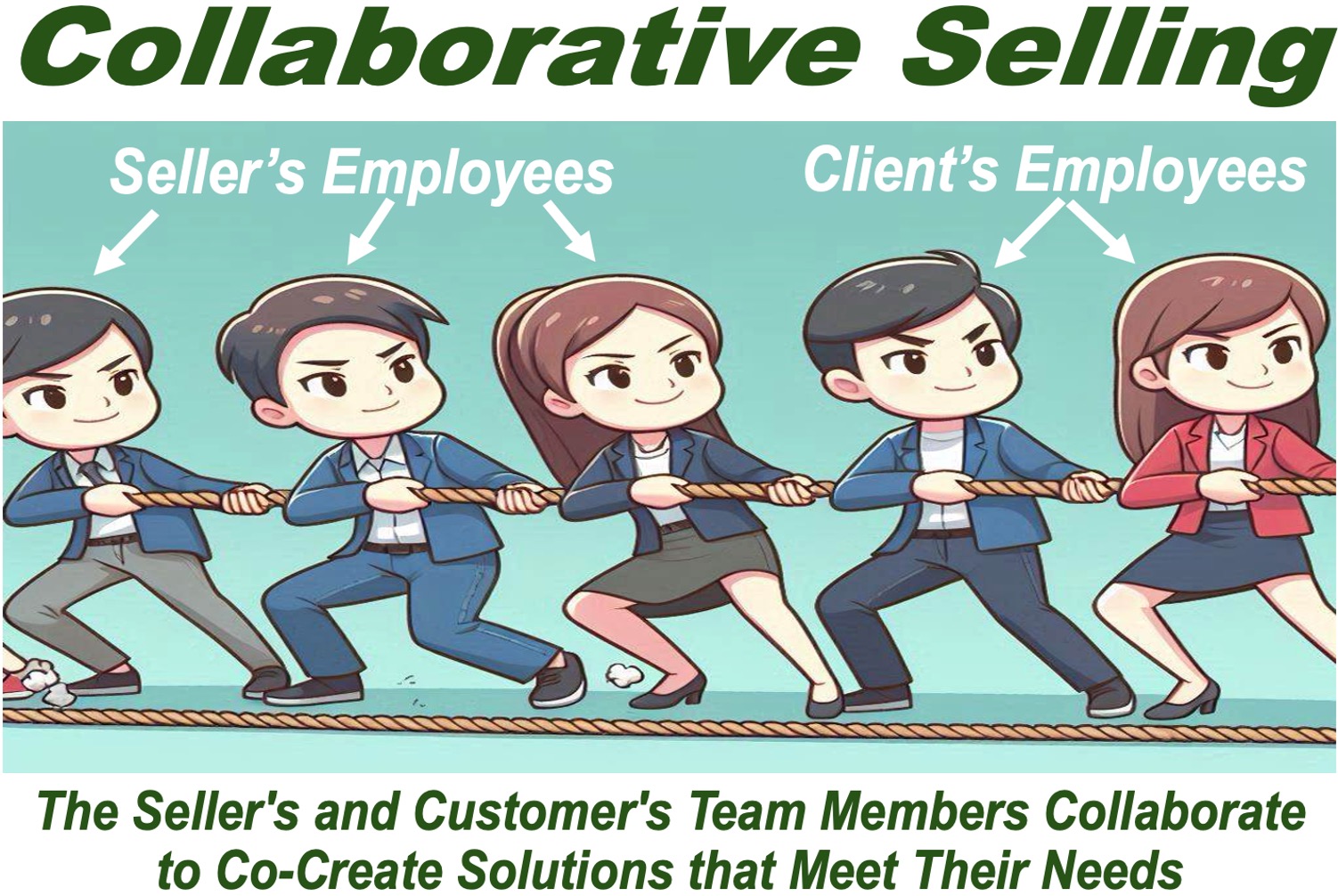Do you focus on working together with your customers to find solutions that meet their needs? If so, you practice Collaborative Selling or Collaborative Sales – you are a Collaborative Seller.
Unlike traditional salespeople who typically push a product or service, as a collaborative seller, your approach centers on partnership and mutual benefit.
You are not just a salesperson; you are a trusted advisor working alongside your customers or *prospects to help them achieve their goals.
* A prospect is somebody who you believe could become a paying customer. For the rest of this article, when you see the term ‘customer’ it also includes ‘prospect,’ and vice-versa. The same applies to ‘product’ and ‘service.’
Square2marketing.com has the following definition of collaborative selling:
“Collaborative selling involves collaboration not between sales team members, but between your salespeople and your customers. Working together, sales professionals and customers can find the right solutions for individual clients, while driving more sales success for your team.”
Customer-Centric Selling
Collaborative selling is a customer-centric sales strategy. ‘Customer-centric’ means placing the customer’s needs, preferences, and satisfaction at the core of every decision and action. It is closely linked with concepts like solution selling, team selling, and relationship selling.
This type of sales approach has become more prevalent in the last few decades, especially as businesses and sales professionals recognize the importance of collaboration in building long-term customer relationships and achieving mutual success.

Collaborative Selling – Understanding Your Customers
The key to collaborative selling lies in understanding your customers deeply. This means taking the time to listen to their challenges, needs, and objectives.
By doing so, you can offer tailored solutions that meet and even exceed their expectations.
Your role is to guide them through the decision-making process, offering insights and advice that are aligned with their interests.
Long-Term Relationships
One of the core principles of collaborative selling is building long-term relationships.
Your aim is not just to make a quick sale and move on. It is to create value for your customers over time.
When you approach selling collaboratively, you invest in understanding your customer’s business and industry.
This investment pays off by fostering trust, loyalty, repeat business, and referrals.
Communication
In collaborative selling, communication is crucial. Open, honest dialogue between you and your customer helps to identify the best solutions.
This involves asking the right questions and actively listening to their answers. Do not underestimate the value of being a good listener.
By engaging in meaningful conversations, you can uncover the underlying issues your customers face and work together to solve them.
Collaborative Selling Means Working Together
In the world of sales, ‘co-creation’ means working together with your customers to develop solutions that are customized to their specific needs.
Rather than offering a one-size-fits-all product, you collaborate with them to design a solution that perfectly suits their needs.
This approach not only enhances customer satisfaction but also helps you stand out in a sea of competitors, many of whom may not offer such personalized service.
Team Expertise
If you want to be a successful collaborative seller, you must leverage the expertise of your team. This could mean bringing in technical experts, product specialists, or customer service representatives to work with your customers.
By involving a diverse range of experts, you can provide comprehensive solutions that address all aspects of your customer’s needs.
You will gain the respect and trust of your customer if they see that you have a team of experts at hand.
Benefits of Collaborative Selling
By working closely with your customers, you build stronger relationships, increase customer satisfaction, and ultimately drive more sales.
Moreover, this approach helps you to stand out in a competitive marketplace, as customers increasingly value vendors who are willing to work with them as partners rather than just suppliers.
Final Thoughts
In summary, collaborative selling is about partnership. It’s about working together with your customers to find the best solutions and achieve shared success.
By adopting this approach, you not only meet your customer’s needs but also build lasting relationships that benefit both parties in the long run.
